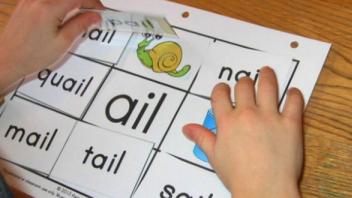This 2018 brief explains the what, the when and the how of phonics instruction to parents, offering guidance on phonics for emerging readers, phonological awareness, word study, approaches to teaching phonics, and teaching English learners.
Key takeaways:
- Students should have acquired phonological awareness, concepts of print, concepts of word of text and alphabetic principles before beginning to learn phonics.
- Most phonics programs incorporate both analytic and synthetic activities. In analytic instruction, students compare words to identify patterns and apply this knowledge to new words (e.g., ran/can), or they examine word families to make analogies between segments of words (e.g., onset and rime, r-an/c-an/f-an/m-an/p-an). In synthetic phonics, students blend individual letter sounds together to form words (e.g., c-a-t/cat).
- Word study is an approach to teach the alphabetic layer (basic letter–sound correspondences) and pattern layer (consonant–vowel patterns) of the writing system by including spelling instruction that is differentiated by students’ development.
- Phonics instruction depends on the characteristics of a specific language; students who learn to read in multiple languages apply phonics that fit the respective letter–sound, pattern and meaning layers.
- Emergent bilingual readers and writers use their knowledge of one language to learn other languages.
See the full brief, Explaining Phonics Instruction: An Educator’s Guide .
Reprints
You are welcome to print copies for non-commercial use, or a limited number for educational purposes, as long as credit is given to Reading Rockets and the author(s). For commercial use, please contact the author or publisher listed.
